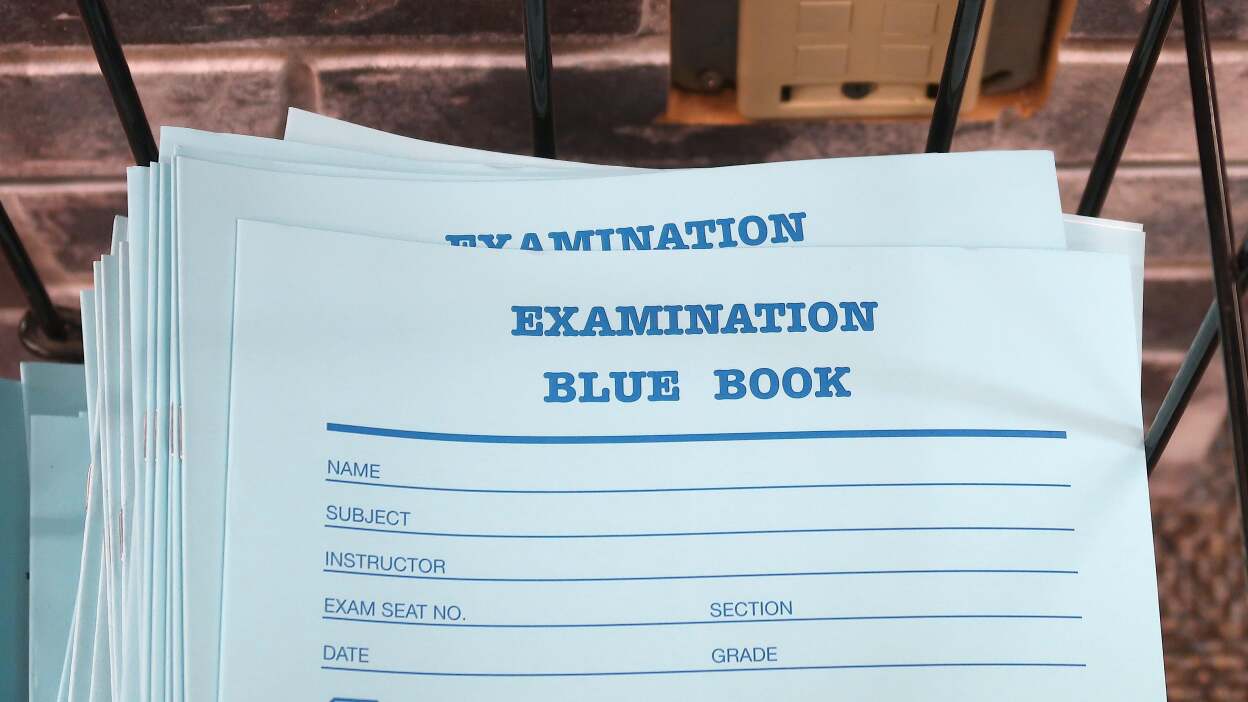Use the ‘Feynman Method’ to Tell If You’re Ready for a Test
Confirm your mastery of a subject by becoming a teacher (sort of).
September 24, 2025

Table of Contents
Did you know you can customize Google to filter out garbage? Take these steps for better search results, including adding Lifehacker as a preferred source for tech news__.
Study methods are usually all about what you can do in your own time to maximize what you learn and that's generally most important, but bringing someone else in to your process can be helpful if done correctly, too. That’s what Richard Feynman, a theoretical physicist, thought—at least in theory. According to many possibly apocryphal sources, the Nobel Prize-winner once said, “If you cannot explain something in simple terms, you don’t understand it. The best way to learn is to teach.”
It’s entirely possible Feynman never said that at all. The closest documented quote I could find, courtesy of his colleague and fellow physicist David Goodstein, stated that Feynman’s inability to break a subject (in this case, a complex question of particle physics) down to the level a freshman student could understand it meant that science didn’t effectively understand it.
But whether this study method truly came from Feynman or not, the basic principle—to know you truly understand a subject, you should be able to teach it to someone else—is pretty sound. Here’s how the Feynman study method works and how you can use it to master new concepts (just maybe not particle physics, apparently).
What is the Feynman method?
The Feynman study technique is so popular for learning and retaining information that it’s recommended to college students and even real-world professionals. It’s a four-step technique that should, when practiced correctly, help you fully grasp the content you’re studying. Here are the steps involved:
- Identify exactly what material you need to learn (to do that, try using a method like KWL or SQ3R to determine which parts of the topic are most critical before you even get started), and then study it on your own using the methods that have proven most effective for you. I recommend the Leitner flashcard method for vocabulary words and simple question-and-answer problems. Then, try blurting, where you write down everything you can remember about the topic before checking it against your materials to see what you missed.
- Once you feel comfortable with the material, teach it to someone else—ideally someone who has never studied it. Explain the material as though you were doing so to a total neophyte (Feynman advises to imagine talking to a child), as thoroughly and as straightforwardly as possible.
- Return to your source material whenever you come across an element you have difficulty explaining in detail.
- Rewrite and streamline your notes, breaking down complex topics into simpler parts, and further clarifying the topic until you reach a level of granularity that seems almost too basic.
Step 2 isn't as simple as it seems, though. You need a pretty willing participant for this and they should ask questions while you teach them. Questions are crucial because the other person may come up with ones you didn't think of while studying the material and a back-and-forth dialogue can help you make connections between concepts in your brain. Don't treat this as though you're standing in front of them giving a lecture. Rather, turn it more into a real conversation where you're presenting the material, but they're also participating. If they ask something you can't answer, head to Step 3, look it up, and then go back to them with the details.
How the Feynman method works
The most important element of this technique is in dissecting and simplifying the material until you feel like you could explain it all to a child. As the story from Goodstein above reveals, Feynman believed if you couldn’t reduce a topic to information comprehensible to a young student, you didn’t really understand it. (A similar quote has also been attributed to Albert Einstein, so consider it a pedagogical philosophy with legs—though there’s no proof Einstein actually said anything of the sort, either.)
What do you think so far?
It works fine if you choose an adult who is unfamiliar with the topic to teach it to. The idea is just for you to simplify it to a child's level of understanding, but you'll probably get more substantive feedback if you actually do the discussion with an adult. Maybe they’ll ask a question you can’t answer, or help you find connections between ideas. Maybe their unique perspectives and experiences will inform their understanding of this new material and launch some groundbreaking revelations for you. Who's to say? This feedback will help you as you move to the third step of reviewing your materials, as it will give you additional things to consider as you do so.
When you’re done refining your notes further, try teaching the topic to someone else again, or moving on to another technique, like distributed practice or overlearning, where you’ll study your simplified notes periodically until you fully grasp the material.
Feynman when no one else is around
It's a nice idea to imagine you could call up your mom or best friend to Feynman it out every time you have a big test coming, but realistically, that's probably not possible. If you can't find anyone with whom to practice this technique, turn to AI. Language models like ChatGPT are great study helpers when used correctly.
Instruct the chatbot to act like it's totally unfamiliar with the subject, then type everything you can remember about it into the text-entry box, as though you were using the blurting method. Ask if the AI has any questions and go from there. I've done this and actually just told the bot I was using the Feynman method, which it understood, and it worked just as well as talking to a human being, although it felt a little weirder. Fire up ChatGPT before a big test in case of emergency.
The Daily Newsletter Ready to do everything better?
 Jordan Calhoun Editor in chief
Jordan Calhoun Editor in chief
Get daily tips, tricks, and tech guides from Jordan and the team.
The Daily Newsletter Ready to do everything better? Get daily tips, tricks, and tech guides from Jordan and the team.
Keep Scrolling for Next Article